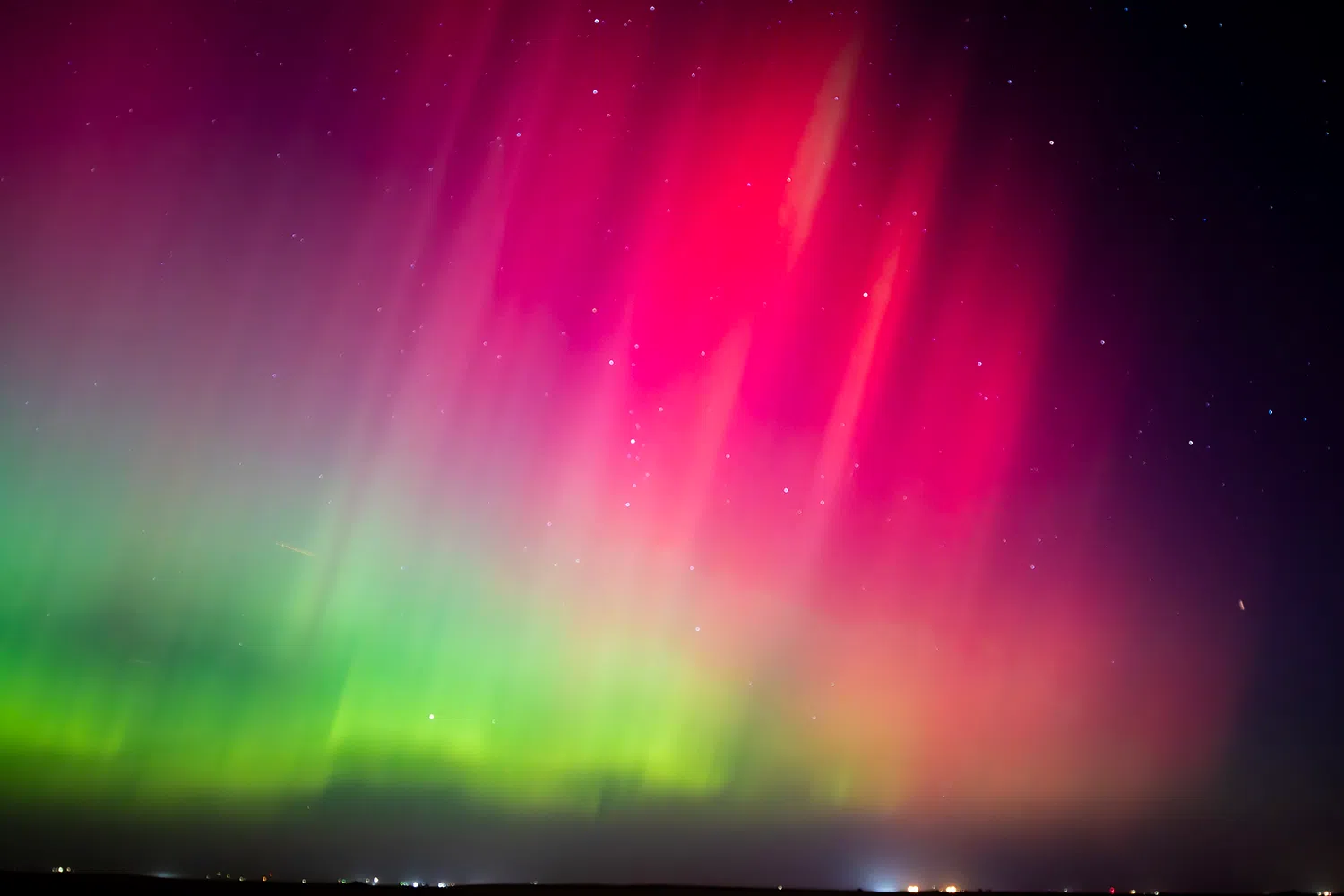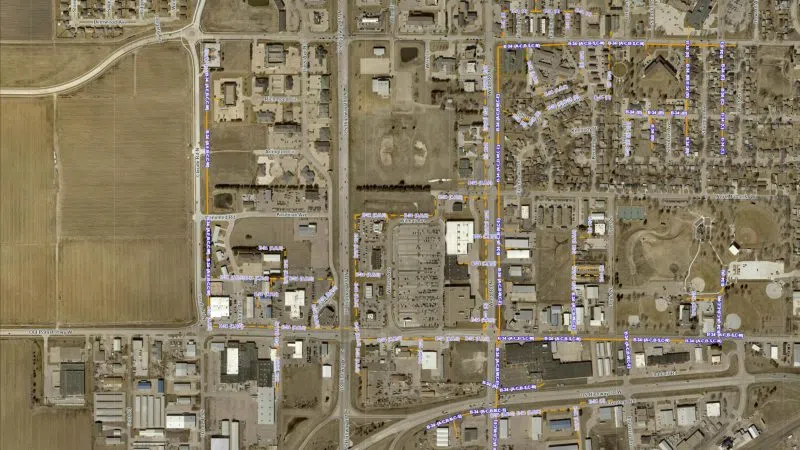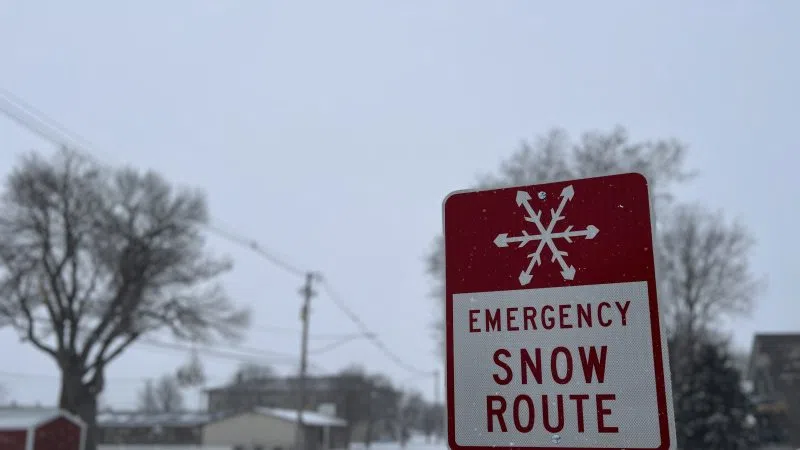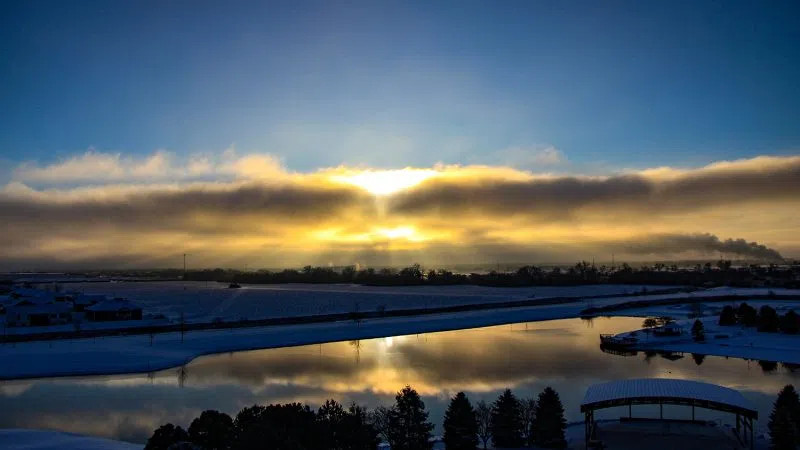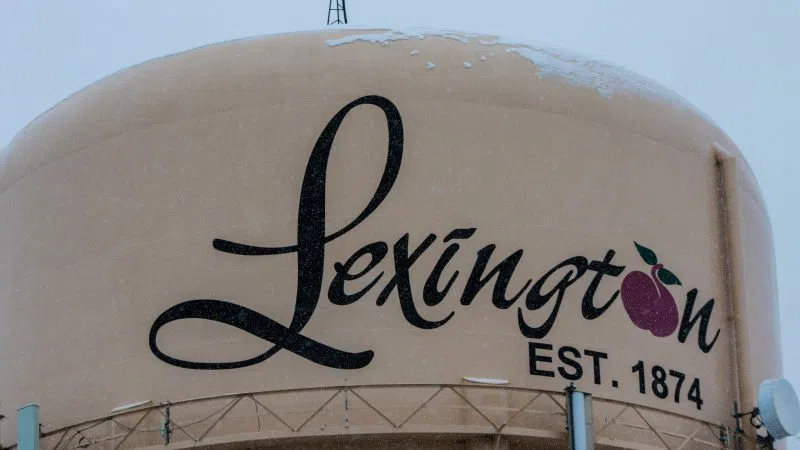PHELPS CO. — When a once in a lifetime event seems likely to happen for a second time in the same year, I knew I wasn’t going to waste the opportunity.
For the second time in 2024, auroras were set to be visible across much of the United States due to an uptick in space weather.
I was able to photograph the auroras in central Nebraska back in May due to a severe geomagnetic storm.
The views had been breathtaking, as I watched the pillars of light shift from pink, to purple and then to a base of green. It was the first time I had witnessed and was able to photograph aurora borealis.
I was sure that was going to be a once in a lifetime event.
However, the National Oceanic and Atmospheric Administration (NOAA) Space Weather Prediction Center noted that a G4 (Severe) Geomagnetic Storm was intensifying on Thursday, Oct. 10.
As a refresher, a geomagnetic storm is a temporary disturbance of the Earth’s magnetosphere caused by a solar wind shock wave. The disturbance that drives the magnetic storm may be a solar coronal mass ejection (CME).
A CME is a significant ejection of magnetic field and accompanying plasma mass from the Sun’s corona into the heliosphere.
“The anticipated coronal mass ejection (CME) arrived at Earth at 11:15am EDT at nearly 1.5 million miles per hour. The CME strength and structure are being closely scrutinized for potential geomagnetic storm intensity, but, G3 levels are now expected due to the magnitude and potential of the CME, therefore G3 or greater warning has been issued,” the Space Prediction Center noted.
“When skies are clear, the aurora (Northern Lights) could be visible as far south as Alabama and northern California,” the SPC stated.
Auroras are the result of disturbances in the Earth’s magnetosphere caused by the solar wind.
The aurora borealis is visible commonly from areas around the Arctic such as Alaska, the Canadian Territories, Iceland, Greenland, Norway, Sweden, Finland, Scotland, and Siberia.
Keeping the space forecast in mind, I had all my equipment ready when I headed out to cover the Bertrand and Loomis rivalry football game.
After I had finished up at the game and the light had significantly faded, I drove north outside of Bertrand to get away from as much of the artificial light as I could.
Not far out of town there was clearly a sheen of light on the northern horizon, and I came to a stop at an intersection on A Road.
I set the camera up and began taking a few test exposures. Sure enough, the light green light of the aurora was visible in my camera’s LCD.
Mentally, I told myself not to take the situation for granted, for the second time in 2024, I could see the aurora borealis from my home state.
The colors at first were a light green near the horizon and transitioned to a dull purple looking higher in the sky.
Amid my scrambling around on the side of the road with the camera and tripod, a white car stopped, likely to see if I needed assistance given the hazard lights from my vehicle were on.
It was hard to see the driver in the dark, but I leaned down near the passenger window to let them know I was fine and just out taking aurora photos.
The driver seemed to recognize something about me and asked for my name.
After I gave it, the driver let out an exclamation and I learned who they were. It was none other than Mrs. Ford, my kindergarten teacher from when I attended Bertrand Community School.
I had not seen Mrs. Ford since her retirement reception several years ago and it was amazing to reconnect with her, even if it was in the middle of a dark road in central Phelps County.
It certainly is a small world.
Following this, I decided to press on toward home, thinking I could stop at another spot with a new foreground.
I didn’t get far before I noticed a brighter red light outside my driver’s side window. I initially thought it might have been the reflection from something inside my car, but I rolled my window down to double check.
As soon as I saw what was outside, I slammed on the brakes and found the next intersection to stop at.
Where the aurora had been faint before, now it was plainly visible and was shifting into vibrant colors of green and pink, nearly reddish at times.
Not only was the color bright, but spatially, the aurora was taking up nearly all the northern horizons. At times I struggled to get the whole scene in my wide-angle lens, sometimes it seemed the pillars of light were reaching directly overhead.
After seeing the aurora in May, I felt that this October show surpassed the spring event.
Finally, it seemed the lights were fading and I finally set off for home. But seeing the aurora borealis for a second time, in a year when I had already had several amazing photo experiences, was stunning.
Editor’s Note: My name is Brian Neben and this is my sixth year as storm spotter and chaser. I write a personal column about each outing, as it helps to collect my thoughts and I have felt like people enjoy reading about my success or failures perusing this rather niche hobby.


